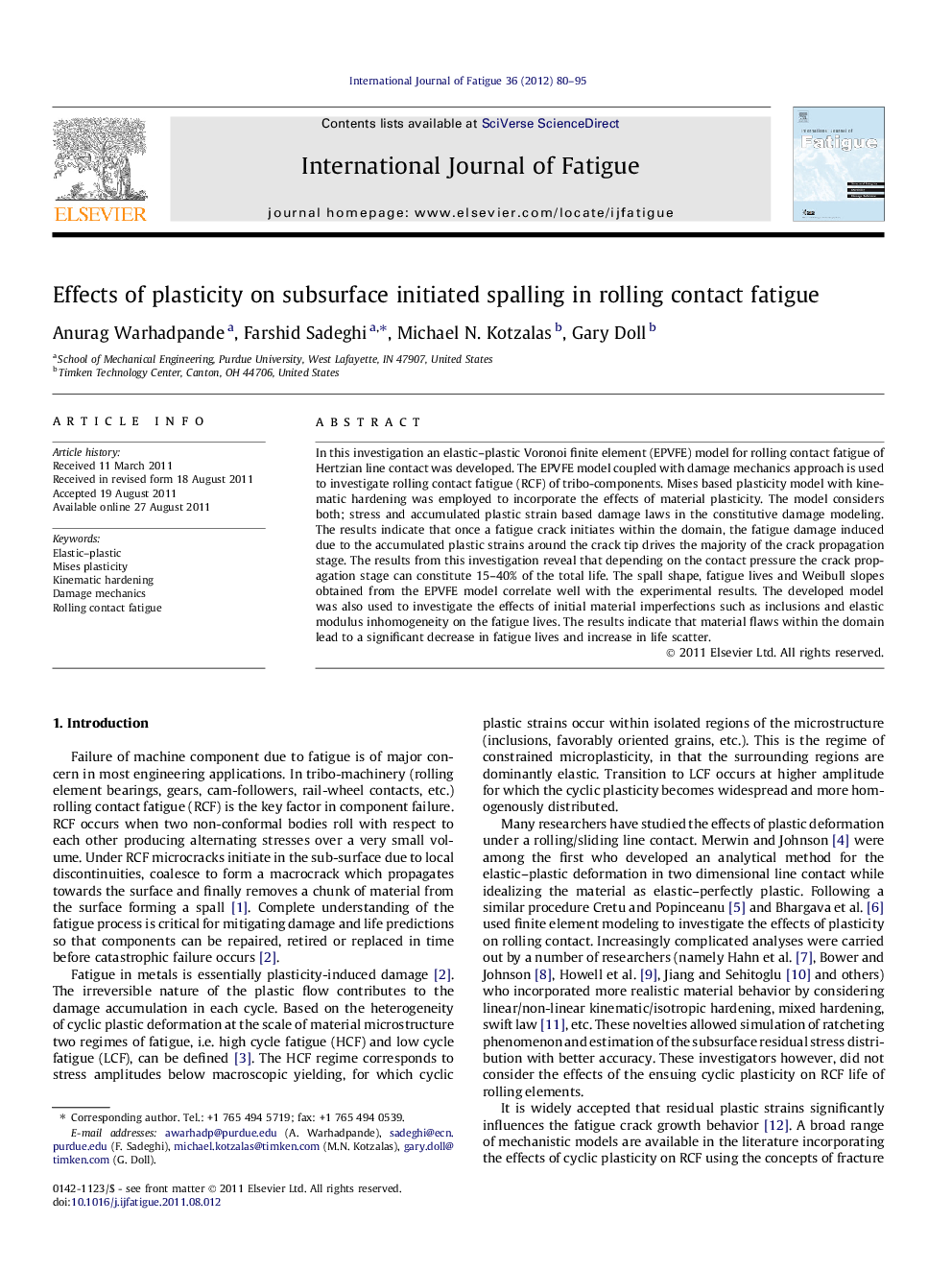| Article ID | Journal | Published Year | Pages | File Type |
|---|---|---|---|---|
| 781128 | International Journal of Fatigue | 2012 | 16 Pages |
In this investigation an elastic–plastic Voronoi finite element (EPVFE) model for rolling contact fatigue of Hertzian line contact was developed. The EPVFE model coupled with damage mechanics approach is used to investigate rolling contact fatigue (RCF) of tribo-components. Mises based plasticity model with kinematic hardening was employed to incorporate the effects of material plasticity. The model considers both; stress and accumulated plastic strain based damage laws in the constitutive damage modeling. The results indicate that once a fatigue crack initiates within the domain, the fatigue damage induced due to the accumulated plastic strains around the crack tip drives the majority of the crack propagation stage. The results from this investigation reveal that depending on the contact pressure the crack propagation stage can constitute 15–40% of the total life. The spall shape, fatigue lives and Weibull slopes obtained from the EPVFE model correlate well with the experimental results. The developed model was also used to investigate the effects of initial material imperfections such as inclusions and elastic modulus inhomogeneity on the fatigue lives. The results indicate that material flaws within the domain lead to a significant decrease in fatigue lives and increase in life scatter.
► Developed an elastic–plastic Voronoi finite element model for RCF. ► Mises based plasticity model with linear kinematic hardening is employed. ► Model incorporates the effect of material microstructure topology on fatigue life. ► Damage due to plastic strains significantly affects crack propagation stage. ► Material anomalies leads to decrease in fatigue lives and increase in life scatter.
